Until a few years back, “Ads” was a not-so-positive term in streaming. Many streaming platforms, including the most premium ones like Netflix and Amazon Prime Videos, used to boost their “Ad-Free” services, calling it “premium class”. But, in 2024, the tables have turned completely!
The same streaming platforms are now “thinking out of the box” to come up with ad-supported streaming tires, making “HVOD” a trending term overnight. And do you know the main reason behind this massive shift? It’s because the preferences of the audience have shifted.
A study by Magna Global found that 68% of consumers were more receptive to ads on streaming services in 2023. Maybe that is why, PwC, in a report, stated that spending on digital video advertising is expected to grow by 12.2% through 2025.
Hence, for new streaming entrepreneurs, ad-based monetization is no longer a choice, rather it’s a necessity. And at Muvi, we are working day and night to simplify ad monetization so that you can excel in AdTech easily!
A Quick Look At The AdTech Landscape in Streaming
The AdTech landscape is quite vast, involving multiple players. It is a bit complex for beginners, but to succeed as a streaming entrepreneur, you need to understand its nitty-gritty. The players involved in it are depicted in the diagram below.
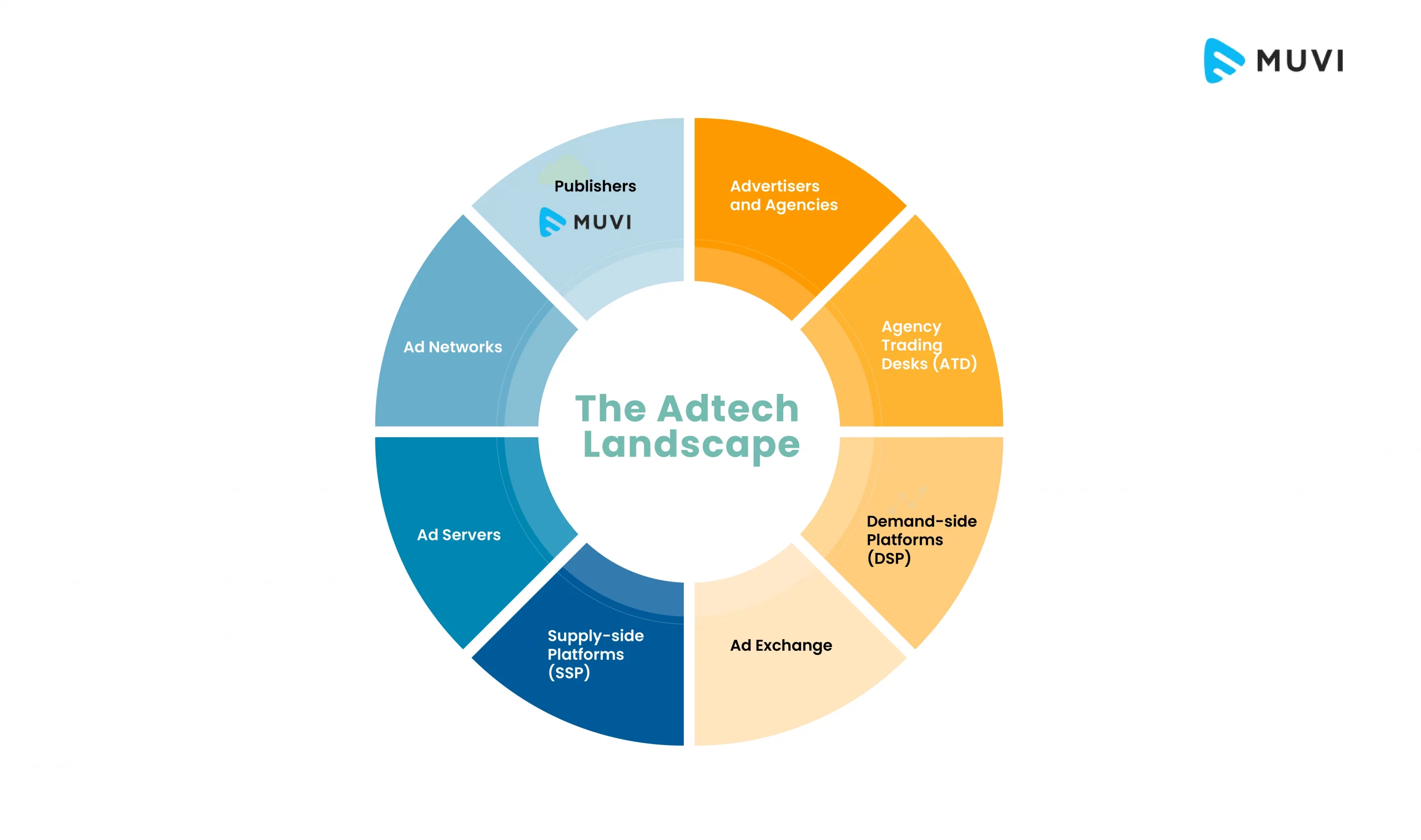
So, it all starts with the Publisher. Publishers are those websites, mobile apps, or streaming services that offer ad space on their platforms. So, when you are creating your video streaming platform with Muvi, Muvi will be the publisher here, but the revenues generated will be solely yours!
On the other end, we have the Advertisers. These are businesses looking to promote their products or services. But they need the help of Ad Agencies for the same. These Agencies act as intermediaries between advertisers and various other players in the AdTech ecosystem. They offer services like campaign planning, media buying and negotiation, creative development, and performance analytics.
Now, these agencies have Agency Trading Desks or ATDs. These ATDs are responsible for managing specific programmatic advertising campaigns. When they take charge of such campaigns, they leverage Demand Side Platforms (DSPs) to purchase ad inventory. These DSPs allow ATDs to bid on ad impressions in real-time auctions held in the Ad Exchanges.
These Ad Exchanges are marketplaces where ad impressions (opportunities to display an ad) are bought and sold in real-time auctions. They act as a connecting bridge between the Demand Side Platform (at the advertiser’s end) and the Supply Side Platform (at the publisher’s end).
Now what are these Supply Side Platforms (SSPs)? SSPs are platforms used by publishers to manage and sell their ad inventory across multiple channels. They coordinate with DSPs to perform the following tasks:
- Set pricing for ad impressions
- Manage ad requests from various buyers
- Optimize ad revenue
Once the ad space is sold by the publishers via SSPs to the advertisers via DSPs, the rest of the process is handled by the Ad Servers. Ad servers are responsible for the actual delivery and display of ads at the viewer’s end. Let’s take a look at this process in our next section.
How Are Ads Delivered in Streaming?
So, imagine you are viewing a video that is supposed to display ads. In technical terms, we say that your video has ad spaces in it. When you start viewing such a video, your video player sends an ad request to the Ad Server, providing information related to your profile, including anonymized location, device type, and available ad space.
The Ad Server sends the request to the Supply Side Platform or SSP. The SSPs then take the help of Ad Exchanges to initiate a real-time auction, where multiple Demand Side Platforms (DSPs) can participate.
These DSPs evaluate if the ad impression matches the targeting criteria of their active campaigns. If a match is found, they bid for the same in real time. The highest bidder wins the impression and gets the chance to display the ad.
After the winner is declared by the Ad Exchange, the SSP sends the winning advertiser’s information to the publisher’s Ad Server. The Ad Server retrieves the ad creative (video, image, etc.) from the advertiser’s storage, and sends it to the player, where it is displayed for the end user. The entire process is lightning-fast and takes place in real time.
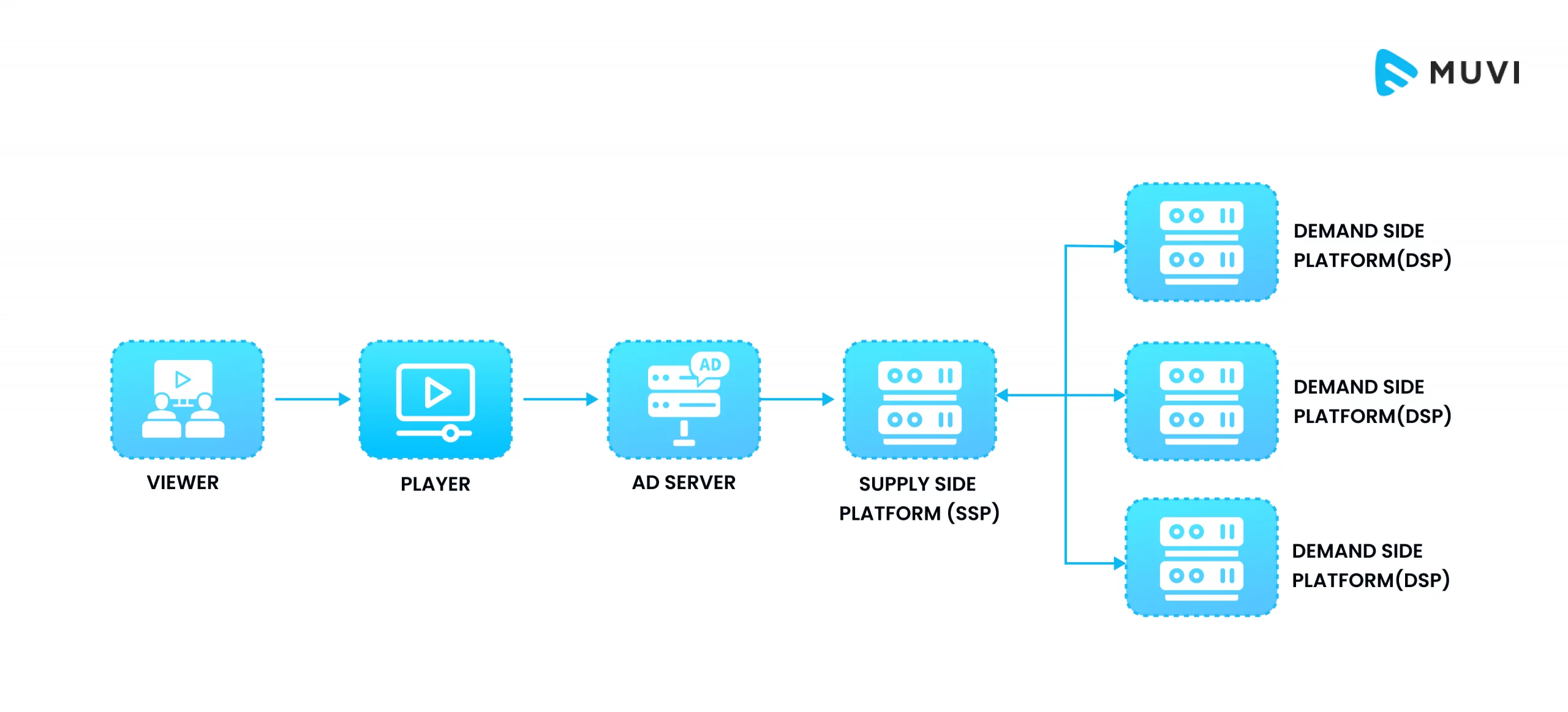
Possible Issues…
Though this process looks fairly streamlined, many issues can arise at any time. Some of these issues include:
- Low fill rate: This occurs when the ad server is unable to find a suitable ad for the available space. It leads to a loss in revenue. There can be multiple reasons behind it. Limited advertiser demand, and poorly targeted campaigns, are some of the prominent ones.
- Ad latency: It means a delay in ad delivery. It can affect user experience and potentially lead to lower click-through rates. It is often caused by slow ad network connections, overloaded servers, or complex ad creatives.
- Ad fraud: Sometimes malicious actors might employ bots or other methods to generate fake ad impressions, clicks, or conversions. Such ad frauds result in the loss of publishers’ revenue and advertisers’ money.
- Ad blocking: Users can install software or browser extensions that block ads from displaying. Hence it reduces the reach of the advertiser’s message.
To combat these issues, innovative AdTech technologies and state-of-the-art Ad Infrastructure are necessary. This is where Muvi’s Ad Ecosystem comes into play. It’s now time to explore it in detail.
A Deep Dive Into Muvi’s State-of-the-Art Advertising Ecosystem
At Muvi, we use world-class AdTech to deliver ads in the most seamless way possible. We want to make Ad-based monetization as simple as possible, using advanced automation, Ad stack partnership, AI, and more…
Let’s walk you through some of the key technologies used in Muvi’s Ad Ecosystem.
CSAI
At Muv, we facilitate Client Side Ad Insertion across product lines, from VoD in Muvi One to hosting in Muvi Flex. Also, we deliver CSAI across devices, from web platforms to mobile and CTV apps.
Our customers can place ads in three prominent ad positions in a video, including:
- Pre-Roll: These ads play before the main video content starts. They are often used for capturing initial viewer attention and promoting relevant products or services.
- Mid-Roll: These ads appear in the middle of the video content, typically during natural breaks or transitions.
- Post-Roll: These ads play after the main video content has finished playing. They offer an opportunity to leave a lasting impression on viewers who have engaged with the entire video.
How CSAI Works
CSAI refers to Client Side Ad Insertion. In simple words, it means that your video player will insert the ad into your video. Here’s how it works:
- When you start watching a video with CSAI, the video player encounters an ad tag embedded in the video’s metadata. This tag is often dynamically inserted into the content stream.
- The video player uses the information in the ad tag to send an ad request to the ad server. This request includes details about the user (device, IP address, potential targeting info), the video content, and the placement of the ad break.
- The ad server uses an algorithm to determine the most suitable ad based on:
- Targeting: Demographics, interests, location, browsing behavior
- Campaign Goals: Advertiser’s objectives and budgets
- Availability: Matching inventory of ads
- The ad server sends back the selected ad along with instructions on how to render it.
- The video player pauses the main video, fetches the ad from the provided URL, and renders it for the user to see.
- After the ad plays, the video player resumes the original content.
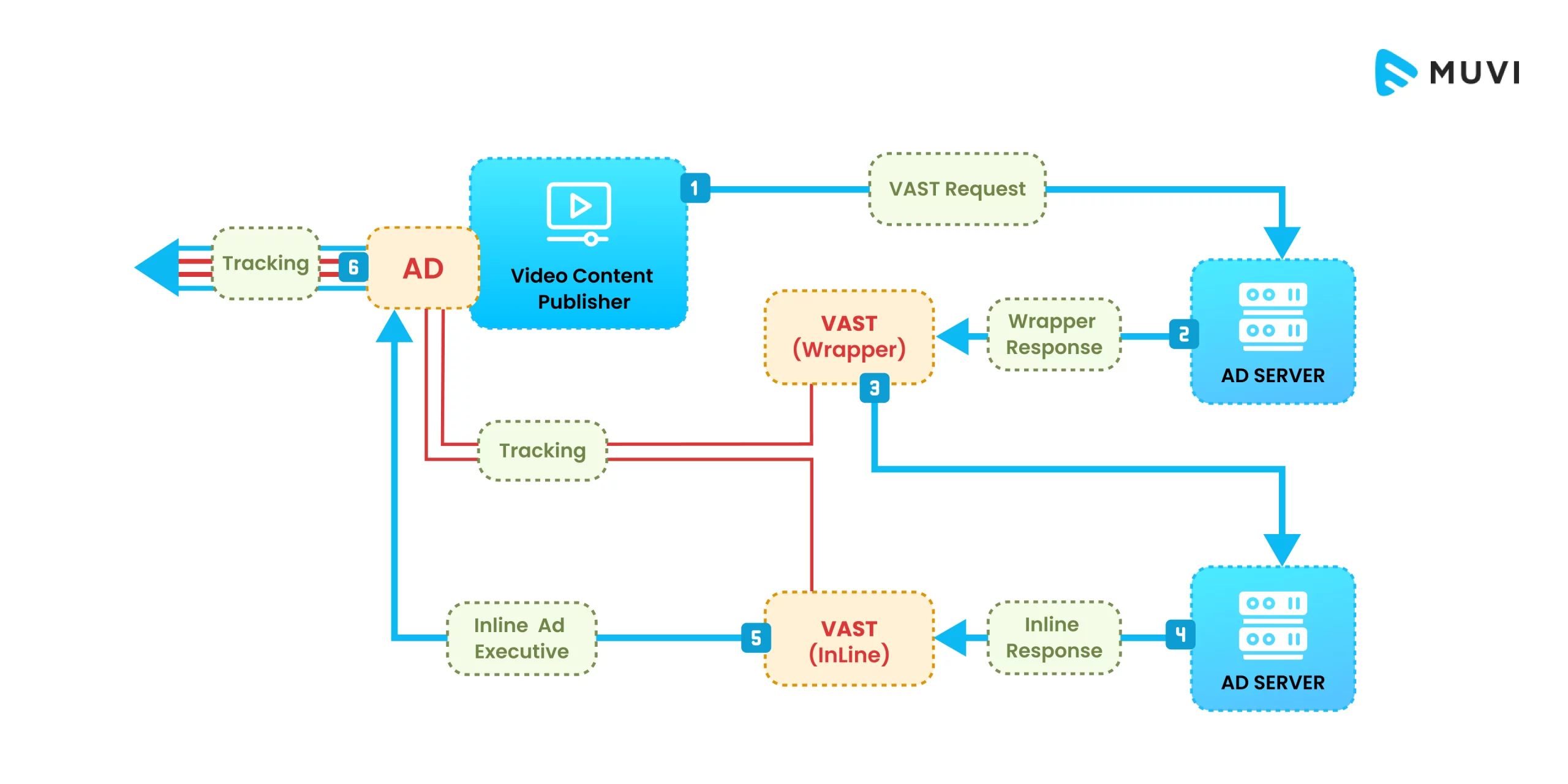
Key Benefits of CSAI
CSAI plays a key role in the faster deployment of ad-based monetization. It also offers more flexibility to our customers in terms of ad personalization and interactivity. Other benefits of CSAI include:
- Implementing CSAI is less resource-intensive.
- CSAI is easier to integrate and less costly. Hence, it can be implemented at a lower budget.
- CSAI also leads to a faster and smoother ad viewing experience.
SSAI
Along with CSAI, Muvi also supports Server-side Ad Insertion. While CSAI is good for ad personalization, SSAI delivers enhanced control over ad placement. It is also less susceptible to ad-blockers.
Many times, our customers want to insert ads into live feeds. They also need to replace their ads in the live as well as satellite feeds. Not only live but even for VoD content, we keep on receiving requests from customers that they want their ads to function on third-party players too.
To address all these use cases and more, we have implemented Server-side Dynamic Ad Insertion (SSAI/DAI) for both live and VoD content. It means that the ads will be stitched into the video dynamically by the servers, instead of the video player which handles ad-stitching in CSAI. We primarily use the SCTE-35 marker for this process.
What is SCTE 35?
SCTE 35 (Society of Cable Telecommunication Engineers 35) is a digital signaling standard. It acts as a communication protocol that enables the timing and signaling of ad insertion points within video content. Hence, it is quite crucial for Server-Side Ad Insertion (SSAI).
Here’s How SCTE-35 is Used in SSAI:
- Splice Point Signaling: SCTE 35 markers embedded within the video stream act as “splice points”. These markers indicate specific points in the video timeline where an ad can be seamlessly inserted without disrupting the viewing experience.
- Information Encoding: SCTE 35 messages not only define the insertion point but also carry additional information about the ad break. This information can include:
- Ad duration
- Ad type (pre-roll, mid-roll, post-roll)
- Network or local ad identifier
- Server-Side Decisions and Stitching: The ad server interprets the SCTE 35 messages and leverages them to decide which ad to serve based on targeting criteria and campaign goals. It then stitches the chosen ad with the main video content at the precise SCTE 35-marked insertion point.
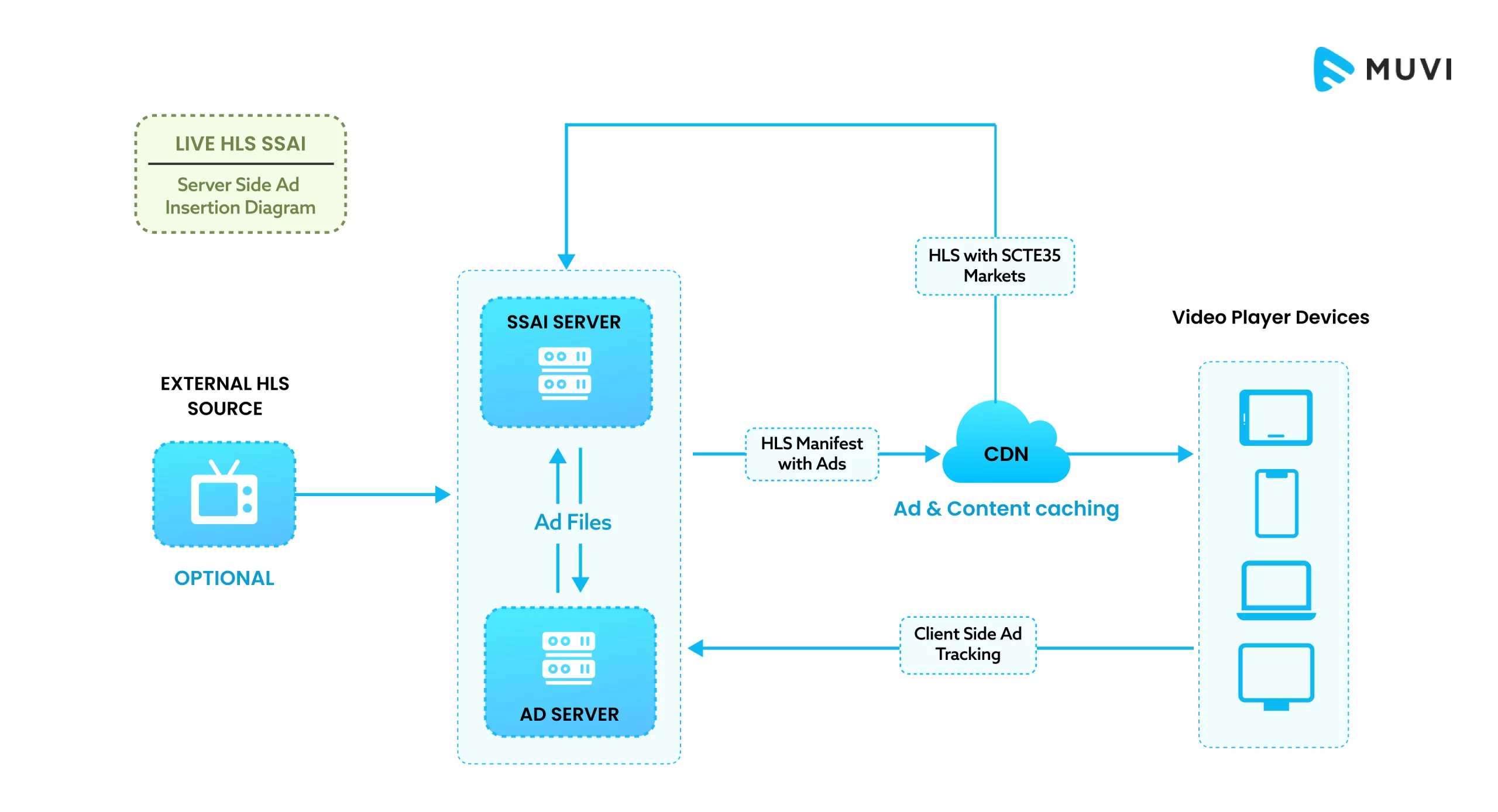
Key Benefits of SSAI/DAI with SCTE 35
- Compatibility with ad blockers: SCTE 35 messages are embedded within the video stream, making them invisible to many ad blockers, leading to a higher chance of ad delivery.
- Improved ad targeting: SCTE 35 combined with SSAI allows for more sophisticated ad targeting based on detailed audience data, leading to more relevant and effective advertising.
- Dynamic ad insertion: This combination enables real-time decision-making for ad selection and placement, allowing for personalized ad experiences and campaign optimization.
- Reduced ad fraud: Server-side ad verification helps minimize the risk of fraudulent ad impressions, ensuring advertisers reach actual viewers and obtain accurate campaign results.
VAST and VMAP support
VAST and VMAP play crucial roles in defining how video ads are delivered and displayed. At Muvi, we support VAST in all our products, while VMAP is supported for Muvi One and Flex.
What is VAST?
VAST acts as a standardized language used to describe individual video ads. It’s an XML document that provides crucial information about the ad, including:
- Creative assets: The ad itself (video file, image, etc.) and its various formats.
- Companion ads: Additional ad elements are displayed alongside the video ad.
- Tracking: Mechanisms to monitor ad impressions, clicks, and other metrics.
- Targeting: Criteria to determine who sees the ad (age, location, interests, etc.).
What is VMAP?
VMAP is an XML document that defines:
- The order of ad breaks (pre-roll, mid-roll, post-roll) within the video.
- The timing for each ad break (e.g., 30 seconds into the video).
- References to specific VAST tags for each ad break.
So, VMAP goes beyond describing individual ads; it acts as a playlist that specifies the sequence and timing of multiple VAST ads within a single video stream.
Programmatic Advertising
Via ad-server-based programmatic advertising, we automated the buying and selling of ad space online.
So, in simple words, programmatic ads refer to automated buying and selling of ad inventory through real-time bidding (RTB) platforms. It involves a lot of complex algorithms and in-depth data analysis, which are used to match the advertiser’s campaign goals with relevant ad opportunities in real time.
Ad Personalization
Ad personalization is the practice of customizing ads based on individual user data and characteristics. This aims to deliver more relevant and engaging ads that resonate better with the viewer, potentially leading to higher click-through rates and conversion rates.
And using Ad Macros, we can potentially disrupt ad personalization to produce the best-ever results!
What are Ad Macros?
Ad macros play a crucial role in ad personalization by allowing the insertion of dynamic content within the ad itself. These macros are placeholders that get replaced with specific user information when the ad is displayed.
Here are some common examples of ad macros:
- %FIRSTNAME%: Replaced with the user’s first name (if available).
- %CITY%: Replaced with the user’s city (if available).
- %AGE%: Replaced with the user’s age (if available).
- %PRODUCT_NAME%: Replaced with the name of a product the user recently viewed.
By using ad macros, advertisers can create personalized messages that directly address the user and their potential needs. For example, an ad for a running shoe store might say “Hi [FIRSTNAME], looking for running shoes that fit your city life? We have a great selection!”
Muvi Ads Product
At Muvi, we have developed our own Muvi Ads product. Muvi Ads is basically an Ad Server software. It allows content creators and publishers to host and deliver various ad formats within their video content, enabling them to monetize their videos and generate revenue.
Some of the key features of Muvi Ads are:
- Personalized Ad Delivery
- Multi-Format Support, including:
- Pre-roll ads: Play before the main video content starts.
- Mid-roll ads: Appear in the middle of the video.
- Post-roll ads: Play after the main video content finishes.
- In-display ads: Overlays displayed within the video player.
- Real-Time Bidding (RTB)
- Ad Reporting
- Programmatic Advertising
- CSAI and SSAI
Major USPs of Muvi’s Ad Ecosystem
At Muvi, we have always believed in offering something unique to our customers. That is why, with innovative Ad-Tech solutions like Ad Stach Partnership, Ad Automation, and Real-Time Bidding, we are trying to make our ad ecosystem as robust as possible.
Some of the major USPs of Muvi’s Ad Ecosystem are:
- Ad Stack Partnership
- Ad Automation
- Audio Ads
- Real-Time Bidding
- Ad Analytics and Reporting
- Blocking Ad Blockers
- In-stream Shopping Ads for Live & VOD
- Use of AI for Ad-Targeting
Why We Are Better Than The Rest?
Muvi believes in delivering all the cutting-edge ad features that ensure the smoothest ad experience for your end users. To check where we stand in our efforts, we compared our ad features with our competitors, and the result is summarized in the table given below.
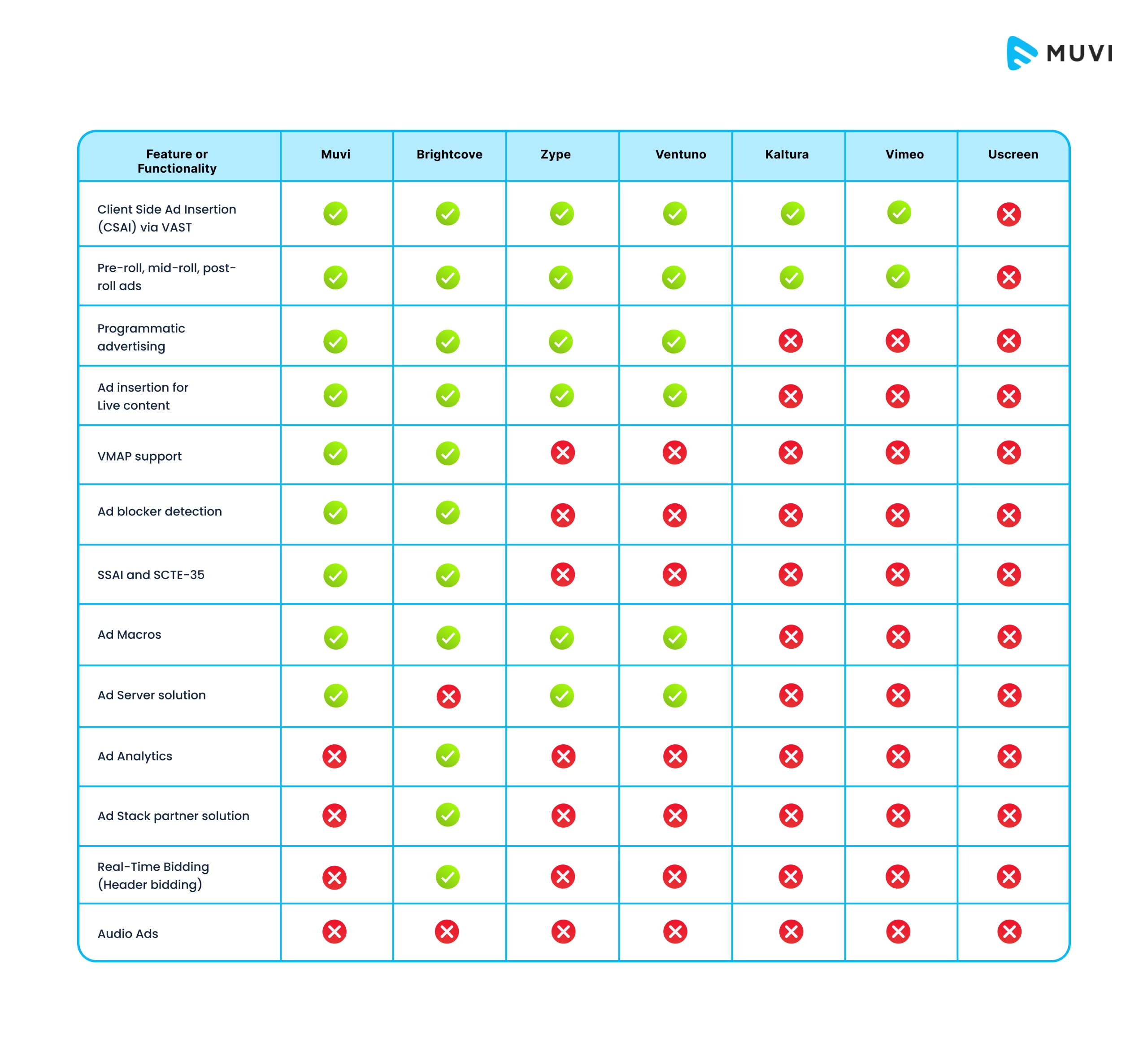
Key Benefits of Our Cutting-Edge Ad Ecosystem
Muvi’s ad ecosystem offers several key benefits for both content creators and publishers. Let’s walk you through some of those core benefits:
- Personalized Ad Delivery: Muvi leverages user data and contextual information to display relevant and targeted ads to viewers, potentially leading to higher engagement and click-through rates. This can improve the user experience by presenting ads that are more likely to be interesting and relevant to the viewer.
- Multi-Format Support: Muvi supports a variety of popular ad formats, including pre-roll, mid-roll, post-roll, and in-display ads. This flexibility allows publishers to choose the ad formats that best suit their content and audience preferences, ensuring a seamless ad experience that doesn’t disrupt the flow of the content.
- Ease of Use: Muvi provides a user-friendly interface for managing and setting up ad campaigns. This makes it easy for even non-technical users to get started with video monetization, even if they don’t have extensive experience with ad-serving platforms.
- Integration Options: Muvi Ads offers two main integration options:
- Out-of-the-box integration: Supports popular ad servers like SpotXchange and DoubleClick for seamless ad delivery.
- Bring your own ad server (BYOA): Allows publishers to integrate any ad server that supports VAST (Video Ad Serving Template) and VMAP (Video Multiple Ad Playlist) standards, providing greater control and flexibility.
To Sum Up
Muvi’s ad architecture makes sure that your users experience glitch-free and personalized ads every time. Hence, you can expect a smooth inflow of ad revenues with greater user satisfaction. But not only ads, we offer multiple monetization options to our customers, including subscriptions, pay-per-view, and hybrid monetization. So, why wait? Try Muvi Products today, and start earning from your videos!

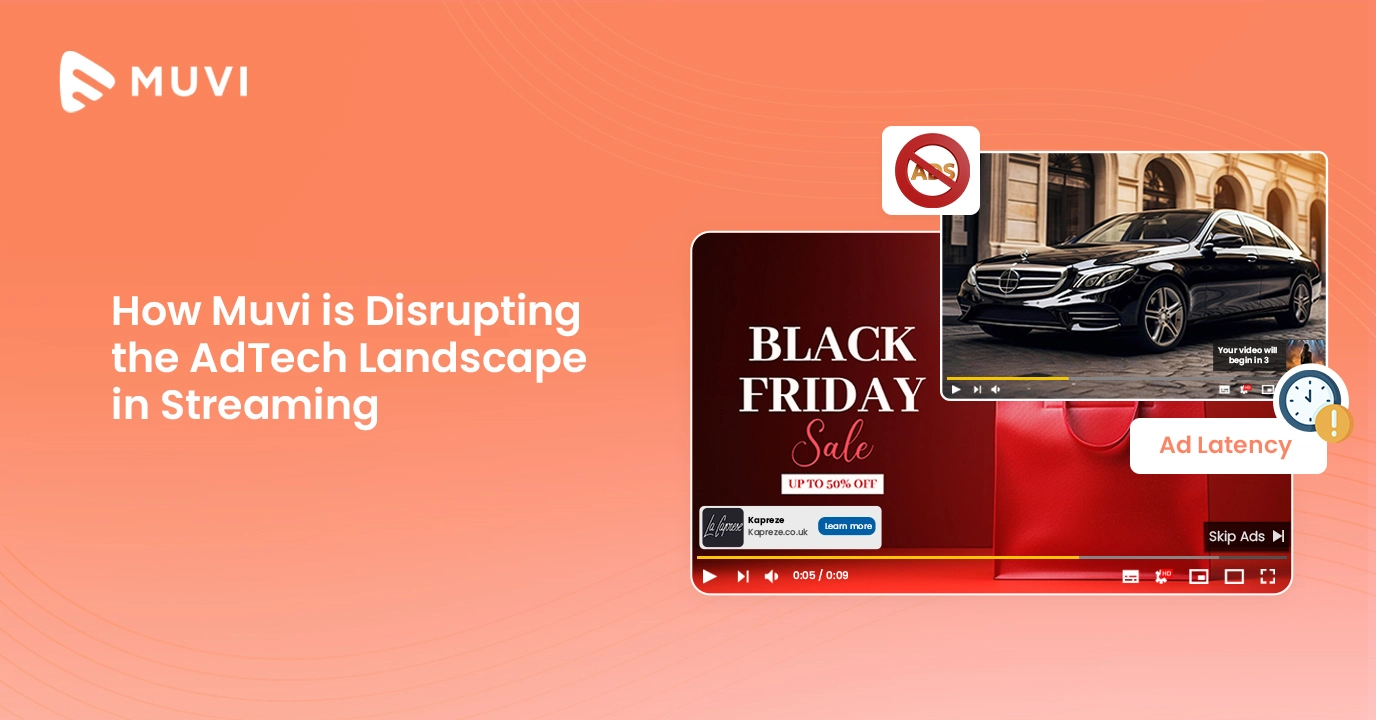







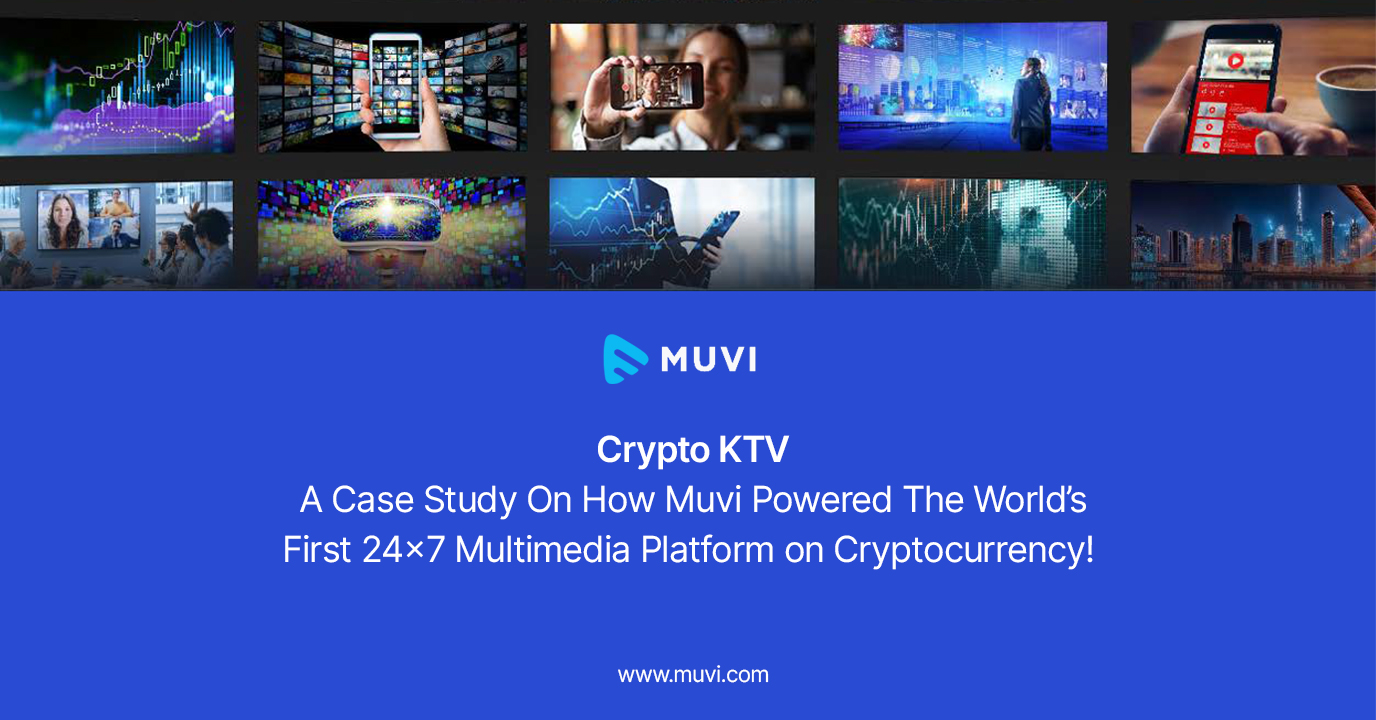
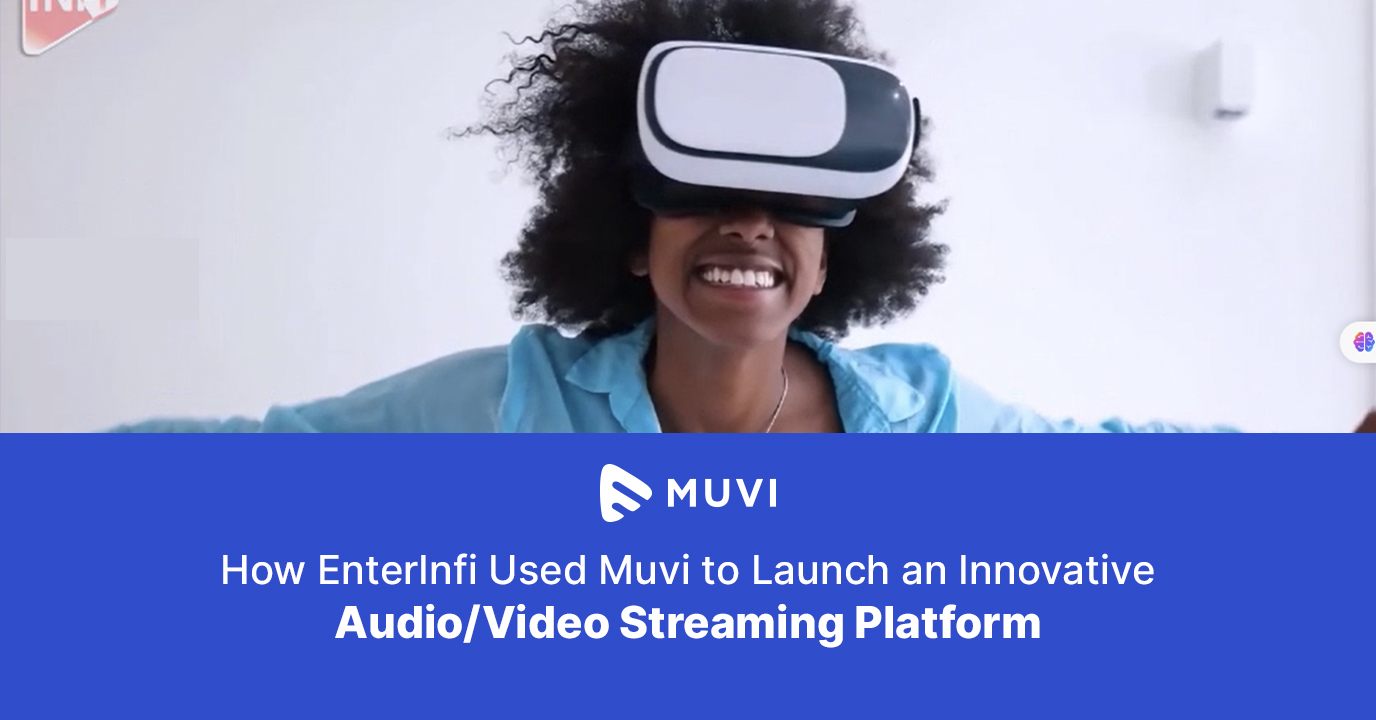





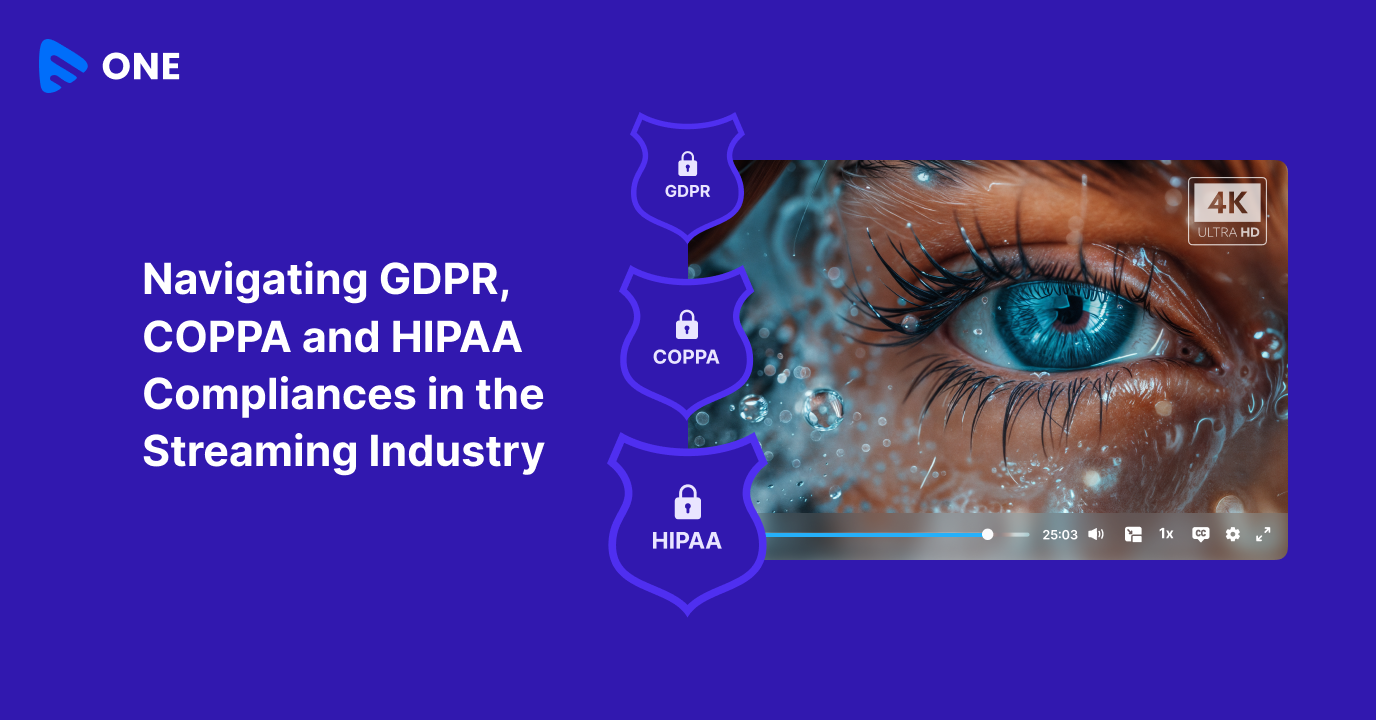
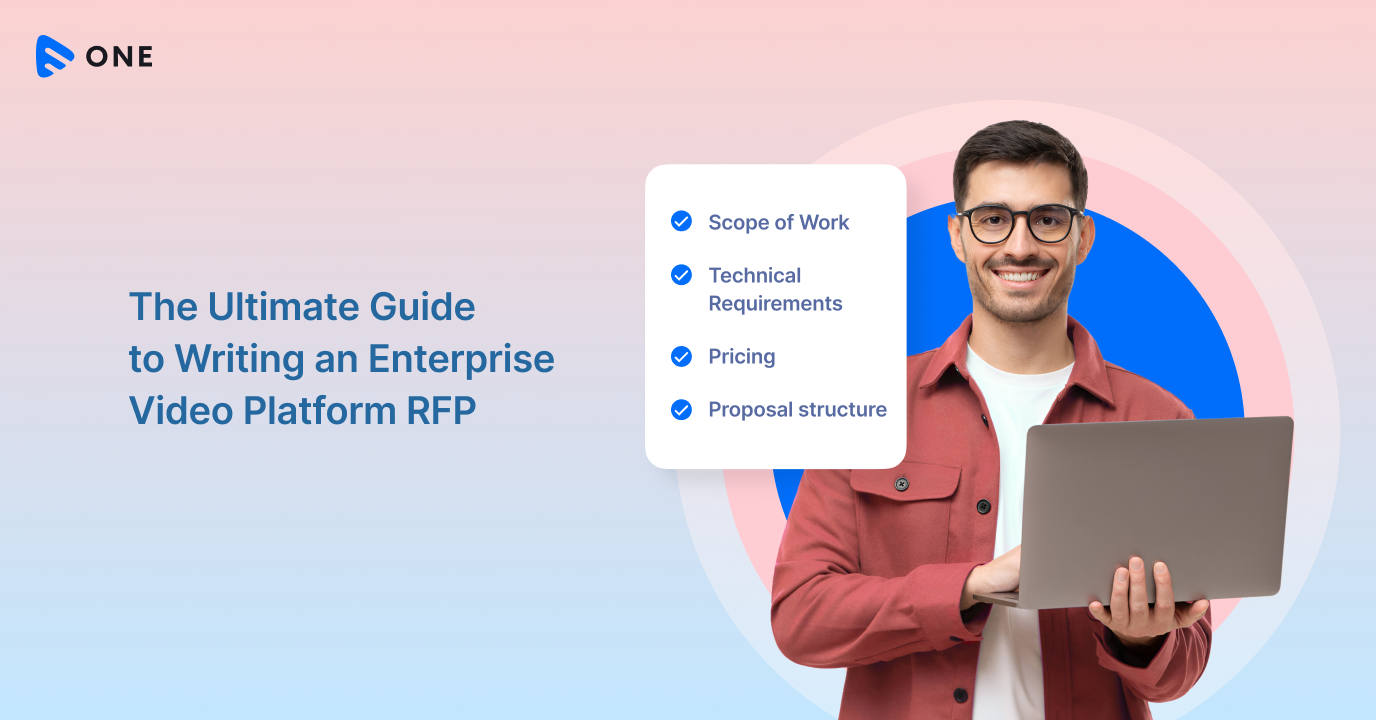
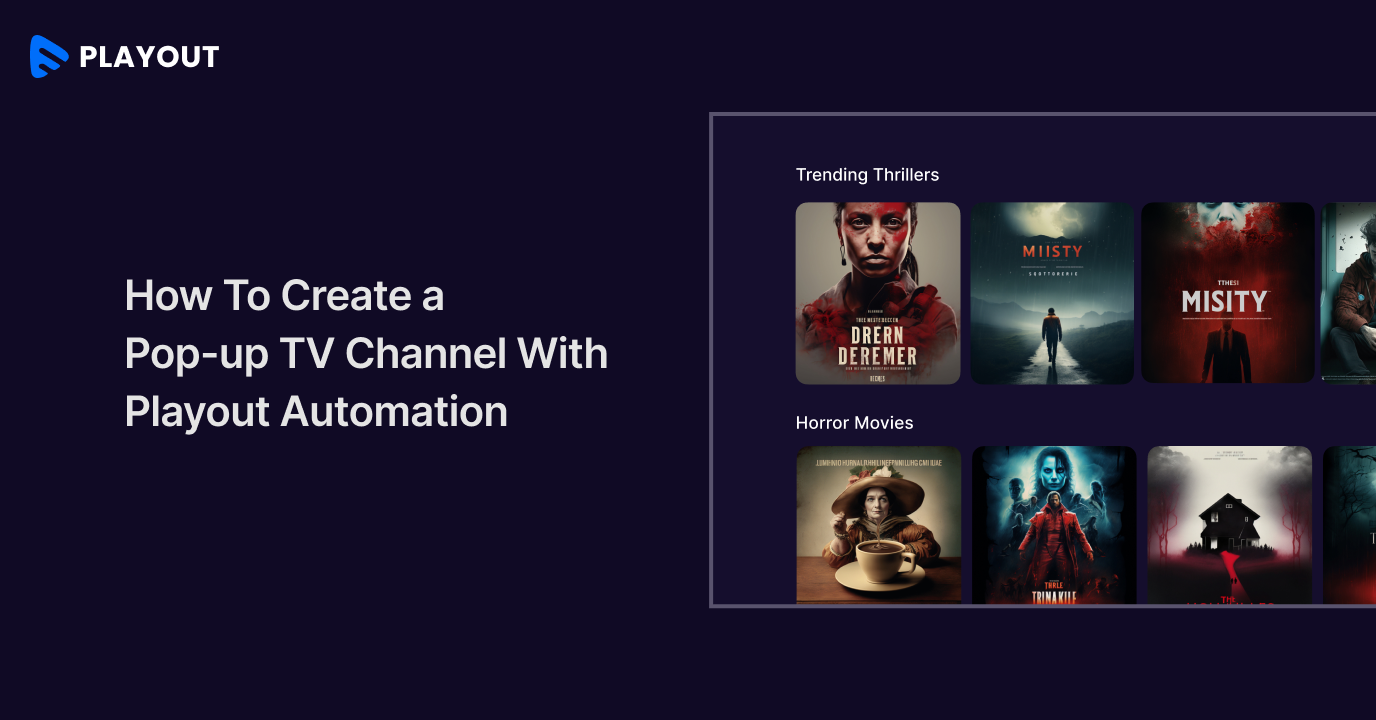



Add your comment